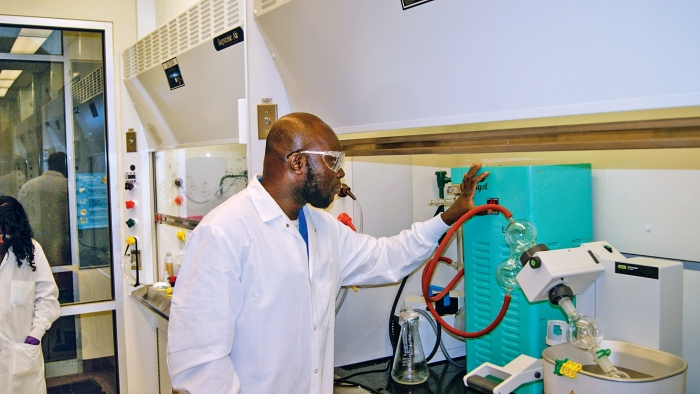How to Use an Ecodyst Rotary Vacuum Evaporator
Rotary vacuum evaporators, often abbreviated to ‘rotavaps’, have been integral installations in all manner of laboratories and research centers for years. Industries associated with the processing of chemical, environmental, or forensics materials have maintained a strong dependency upon rotovap technologies.
To achieve a faster rate of extraction, collection, and analysis of remnant or solvent substances, Ecodyst’s broad range of rotovap systems have established themselves as the most reliable and efficient evaporation equipment available today.
Assigned to a vast array of applications, Ecodyst’s rotary vacuum evaporators are employed in sample concentration and separation, solvent recycling, as well as extractions, and collections for critical analyses.

Ecodyst CEO George Adjabeng with an EcoChyll X1 system.
Ecodyst’s Rotary Vacuum Evaporators
Problematic Properties of Past Products
Older rotary vacuum evaporators consisted of some contrasting components which often contradicted the more efficient evaporators of today.
More commonly in the past but still used sparingly today, a classic rotovap configuration contained a time and energy-consuming cooling system which utilized dry ice, water, or chiller mechanisms which, besides being expensive to run, slowed down the whole extraction process.
Ecodyst-assisted Evolution of Rotary Vacuum Evaporators
The emergence of our hugely superior and successful ‘EcoChyll Evaporators’ signaled the demise of contemporary and highly convoluted cooling systems. The deployment of direct cooling systems seriously speeded up the whole process and paved the way for the straightforward procedure followed today.
Crucial Components and Parts
To conduct a complete and professional rotary vacuum evaporation extraction, there are 5 crucial components, in order of operation:
- Upright True Volume Flask.
- High-speed Stirrer.
- Energy-efficient Heater.
- Self-cooling System.
- Receiving Flask.
5-point Evaporation & Extraction Process
Though the size of a solvent or sample can significantly affect the minor details of a rotary vacuum evaporator’s operation, the standard process and systematic approach remain roughly the same:
- First, the solvent is poured into a glass flask which is positioned atop an energy-saving heater. The capacity of the flask container is variable with sizes supplied to accommodate loads of up to 200 liters;
- The solvent is heated and stirred continuously and simultaneously to make it reach the desired temperature just below its characteristic boiling point;
- The resultant chemical reaction manipulates the substance to initiate the evaporation of the liquid, separating the vital solvent parts from the waste substance. The waste is safely disposed of through a drain tap fitted below the flask;
- Next, the evaporated substance is contained in a glass tube utilizing a power suction mechanism which transports it to a highly ecological and efficient self-cooling unit;
- When cooled to a pre-determined level, the remnants will drip into a receiving flask of varying sizes, depending on the size of the original solvent sample.
The Relative Benefits of Ecodyst Evaporator Systems
Our research and development team has worked tirelessly to come up with a rotary vacuum evaporator, in the form of the EcoChyll system, that gives guaranteed results and high-performance every time.
Cheaper to use and maintain with a wider range of functions and specs, the EcoChyll gives more quality control to the customer. The characteristically quicker processing times also contribute to the popularity of this environmentally empathetic piece of equipment. Contact us today to learn more.



